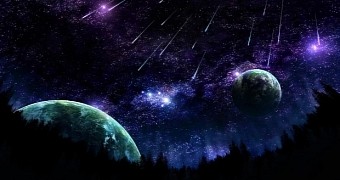As it turns out, we, Earth dwellers, are in for a treat this Thursday and Friday. The Draconid meteor shower is expected to peak this October 8 and 9, with NASA saying around 10 or maybe 20 meteors per hour will streak across the sky.
It's not much, not when compared to other showers that deliver hundreds of meteors each hour, but it's still something. Sure beats lying in bed and staring at the ceiling.
So, what's the deal with this meteor shower?
The Draconid meteor shower happens when Earth encounters bits and pieces of debris left behind by a comet by the name of 21P/Giacobini-Zinner.
This comet was discovered back in the year 1900 by French astronomer Michel Giacobini, who observed it moving through the constellation of Aquarius.
The comet's nucleus measures 2 kilometers (1.25 miles) across. The orb circles the Sun once every 6.6 years and constantly sheds while traveling through space.
When debris left behind by comet 21P/Giacobini-Zinner enters our planet's atmosphere, it catches fire. The result is the Draconid meteor shower.
This meteor shower was once called the Giacobinids, after astronomer Michel Giacobini, who, as noted, was the first to document the comet causing it.
These days, it's called the Draconids because, when they form and streak across the sky, the meteors appear to originate from the constellation Draco, Space explains.
Other showers will happen by the end of the year
In case you miss the Draconids, you should know there are many other meteor showers to look forward to by the end of the year. For starters, there's the Orionids, which will peak on October 22.
Then there are the Southern Taurids and the Northern Taurids, which will light up the sky between November 4 and 5 and November 12 and 13, respectively.
Finally, there are the Leonids and the Geminids. The Leonids is scheduled for November 17-18, and the Geminids will happen on December 13-14.

 14 DAY TRIAL //
14 DAY TRIAL //